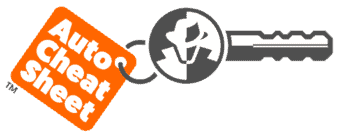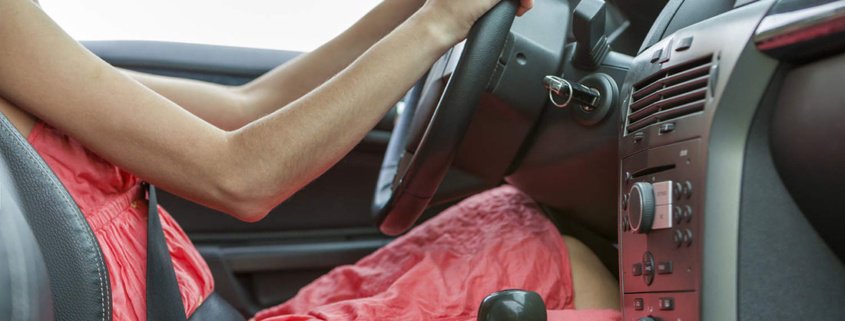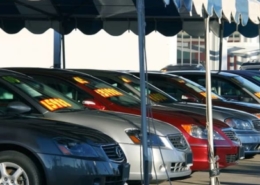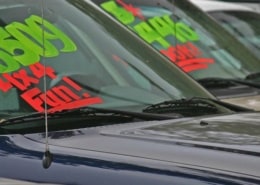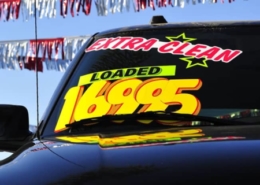How to Test Drive a Used Car
Many car buyers find the test drive the most intimidating part of buying a used car. It’s like when the waiter invites you to try the wine, and you don’t feel qualified to pass judgment.
All you need is a little knowledge. Once you understand why you need to drive the car and what you should be looking for. You’ll feel more confident about the whole process.
Why You Should Always Test Drive a Used Car
When you test drive a used car, you’re attempting to answer two questions: can you see yourself driving it, and does the vehicle have any problems? Many used car buyers think it’s all about the last one.
Looking for defects or faults is essential, but it’s not as important as finding the perfect car that’s right for you. A used car is a big decision, and it’s important not to rush. You may think you’ve found your ideal vehicle, but if you cannot live with it, you’ll soon be out car shopping again.
Six-Step Guide to Properly Test Driving a Used Car
Today you can do 95% of your used car shopping online before buying the car. You will still need to visit the dealer to inspect and test drive the vehicle visually. I’ve seen many people buy a car without test driving it.
I believe this is a huge mistake. You will try on a pair of shoes before you buy them. Before you spend thousands of dollars on this significant purchase, complete this quick six-step used car test drive to ensure you’re buying a nice, trouble-free used car.
Before you get to the test driving phase of the used car buying process, I’m assuming you have already vetted the vehicle by inspecting the used car vehicle history report.
Suppose you have not done this yet. Please visit my section on vehicle history reports. The last thing you want to do is test drive a car, fall in love with it, and find out it’s been in a bad accident or the title has been branded salvaged.
While driving the vehicle, you should pay attention to the mechanical aspects of the car. This is the time to key in on certain things like does the engine run smooth, does the transmission shift well, are the brakes mushy, etc.
Even minor things, such as turn signals and windshield wipers, should be problem-free. Please make sure you turn it on and check everything before making a final decision.
Some questions your test drive should answer:
- Does the car start and stay running on the initial first try?
- Do the gears shift quickly and smoothly?
- How does the car idle? Is it abnormally high or low?
- Does the car accelerate smoothly and not cut out?
- Check if the power windows, seats, cruise control, A/C, defroster, radio, CD, DVD player, and all the other knobs on the dashboard work?
- Are there any previous owner maintenance records available?
- Do you see any unusual exhaust or hear odd noises from the vehicle while it’s running?
- Are there any unusual smells inside the vehicle, like mold or mustiness?
- Does the used car have a bumpy or smooth ride?
- Are the tires in good shape?
1) Get Comfortable Before Your Test Drive
Settle into the driver’s seat. Set the seat height and distance from the steering wheel and pedals to where you feel comfortable. Adjust the mirrors and check the position of all the controls. Make sure you can find the pedals, the shifter, and the turn signals.
Turn off the radio to avoid distractions. Don’t let the salesman or seller rush you through this process. If you’re not comfortable, you’re not giving the car a chance to impress you, and you may not be safe either.
2) Take Your Time During The Test Drive
A private seller will usually want to go with you, which should be understandable. A used car salesperson may be more willing to let you go alone. If offered that opportunity, take it! It’s much easier to get a feel for a car without them babbling next to you. If you do go out unaccompanied, be sure to agree on a distance or return time, and don’t cut either short.
If you’re unfamiliar with the neighborhood, ask the seller or salesman to suggest a route. This should cover a mix of roads so you can drive at various speeds and get a feel for how the car handles different surfaces.
Many dealerships have a preplanned test drive route. The route they have set out is made up of only right turns. When you get in the car with the salesman, ask them if there is a set route you will have to stay on and if they will allow you to deviate from the course so you can get a feel of the vehicle on different roadways and conditions.
Take the car through a couple of crowded parking lots and practice parking several times to get a feel of how the car handles. If you’re close to home, there’s no better time to see if the vehicle will fit in your garage.
Most test drives are probably less than 20 minutes, and that’s not long enough. You will want to give yourself more time if you’re driving this vehicle for a few years.
If you can have the car for an hour, you’ll have a better chance of picking up on things you don’t like.
3) How Does the Vehicle Drive?
You want to get a feel for acceleration, braking, steering, and ride quality, but don’t push too hard on the gas pedal while on public roads!
Check that everything happens smoothly, the engine doesn’t stall or cough, the brakes grip without juddering or grabbing, and the car doesn’t bounce around. You don’t need to be a mechanic to spot when something doesn’t feel right.
4) Listen Carefully for any Odd Noises
While on the test drive, listen carefully. It doesn’t take special training to spot rattles, squeaks, knocks, and grinding sounds, none of which should be there.
If you can drive on the highway, note how noisy the car seems. Performance cars are often quite loud inside (a result of wider tires and a sporty exhaust,) and you might decide it would be too tiring on a long journey.
5) Be on the Lookout for Anything Out of the Ordinary
On some modern vehicles, the blind spots are surprisingly large; make sure you can see out of the car well enough.
Sometimes windshield pillars can make it hard to see traffic at intersections, while high side windows can make it harder to reverse out of a parking space.
Have a good look around to see if you can live with whatever obstacles to visibility (blind spots) you find.
6) Does the Car Fit You and Your Driving Needs?
It’s essential you feel comfortable in the car. If you find your back aching or knees rubbing after 20 minutes, this is probably not a car you’ll enjoy driving.
Conversely, if it seems to fit you like a glove, you may have found the used car for you.
Further Tips and Advice
Further tips and advice about properly test driving a used car:
- Every used car is unique and stands on its own regarding quality and reliability.
- Open and close all the doors to ensure they’re firm and there is no loose glass inside. If you do, the vehicle was possibly involved in an accident. Examine the wrinkles around the quarter panels, hood, and trunk lid. Please check that they are straight and equally spaced. This is another indication that the automobile was involved in a fender accident.
- Get in your car and start it; take a moment to adjust the mirrors, seat, and so on, just like you would in your vehicle. You may now test and manipulate all of the buttons and switches. Check the A/C and heater, listen for grinding, and wait for the A/C motor. Turn on the radio, adjust the level, and inspect the speakers for cracking using the balance/fade switch. Check the CD player and, if applicable, the DVD player. Open the sunroof and check that it closes properly. Check that all of the seatbelts are in good working order.
- After reviewing the vehicle’s features, go for an extended test drive. Check the brakes as soon as possible before hitting the main routes. Allow the car to warm up before driving in as many different driving circumstances as possible, including highways, main roads, stop-and-go traffic, bumpy roads, gravel, and so on.
- Turn down the radio so you can hear what’s happening in the car. The car should shift smoothly and without jerking or jumping. Check the automobile’s alignment, particularly on a long bridge, to check if it pulls to the left or right. Check headlights, brake lights, backup lights, and turn signals at a shopping area where you can see your reflection.
- When buying a used car, the two most important things you can do to protect yourself from making a mistake are:
- Have the vehicle inspected by an independent certified mechanic.
- Acquire and review a used car vehicle history report.
- A mechanic will put the car on a lift and inspect the cosmetic and mechanical systems of the vehicle. The history report will disclose any discrepancies in the vehicle’s title history to guarantee you’re purchasing a clean, reliable, used car.
Decision Time
When you finish the test drive, it’s time to make up your mind. Either it’s not the car for you, in which case you tell the seller or salesman and walk away, or you start negotiating.
If the latter, it’s time to bring up those problems you noticed during the test drive and see if you can get the price lowered or any necessary work done.
